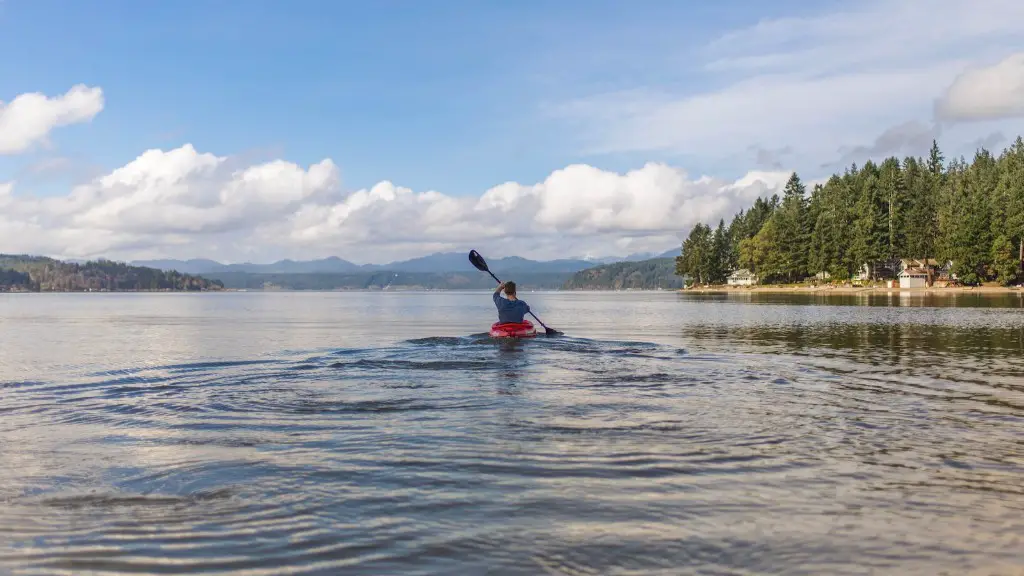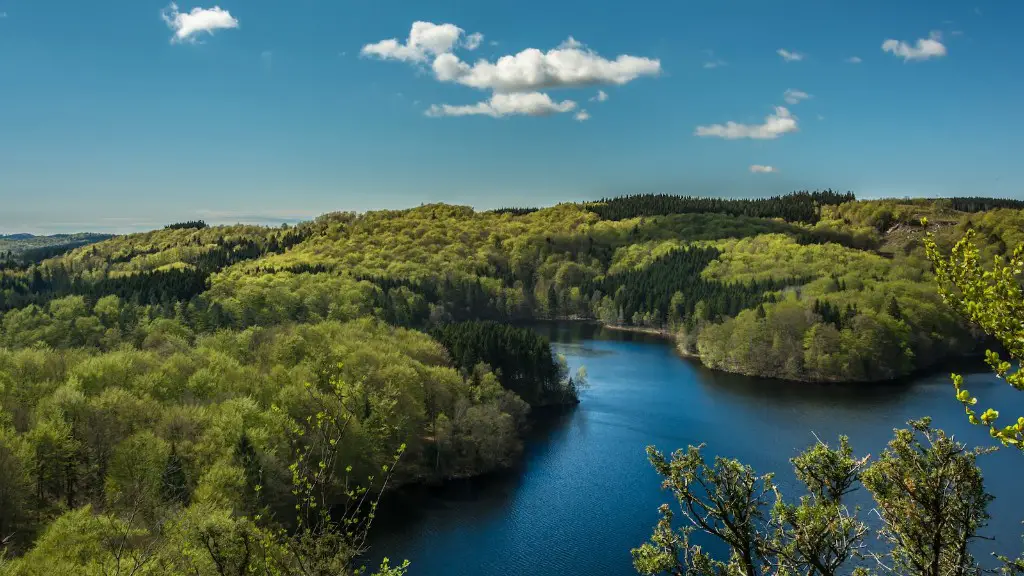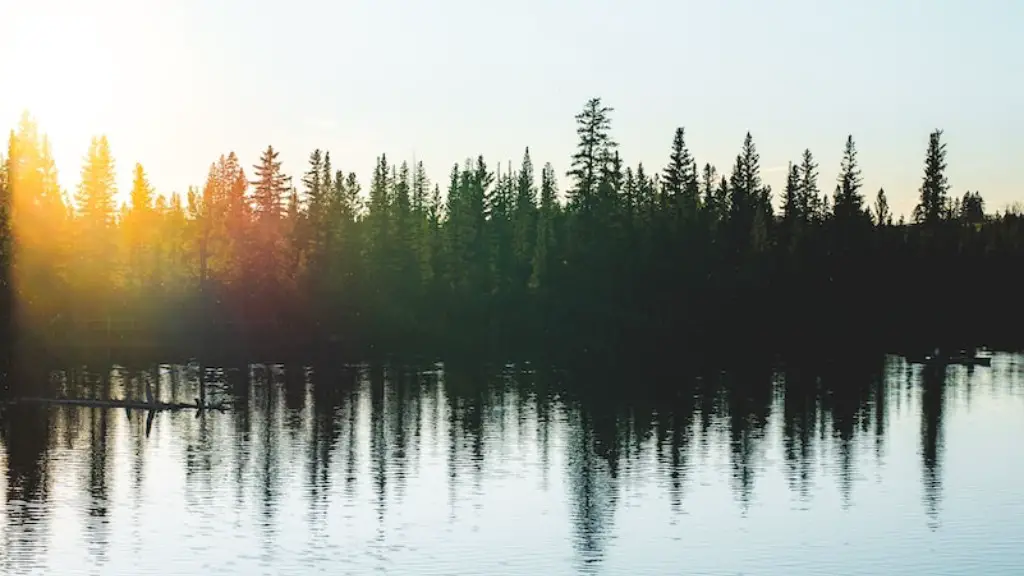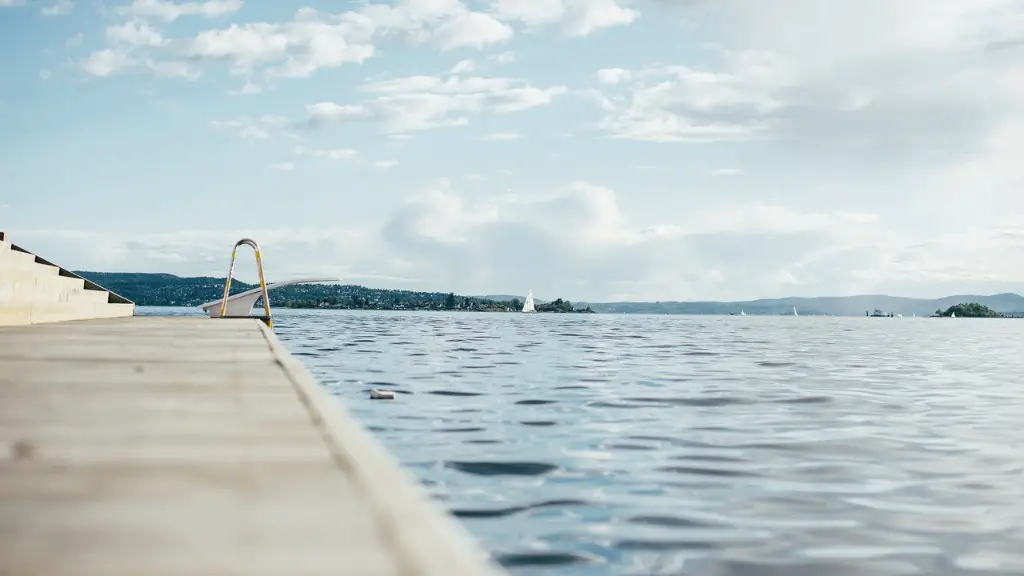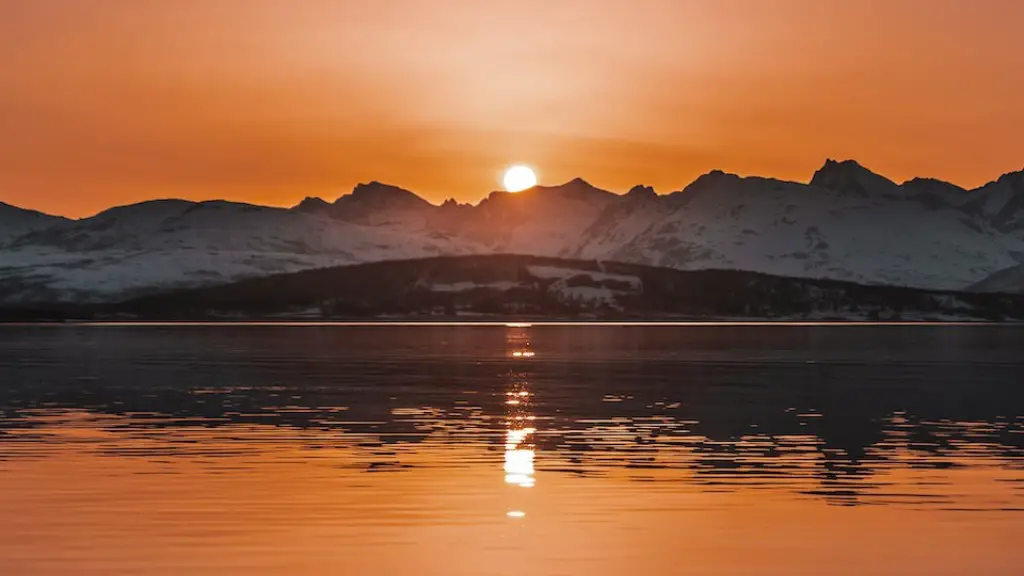The Power of Lake Superior
Lake Superior is the largest of the five Great Lakes by surface area, stretching nearly 350 miles across. Its sheer size and strength has been a major source of regional economic prosperity, providing sustenance to many local communities and businesses over the years. But the power of this massive body of water has also made it an incredibly dangerous one for vessels attempting to traverse the lake.
Lake Superior is an incredibly turbulent body of water, constantly shifted by the wind and waves. In fact, the weather on the lake is known to change from one minute to the next. And with its deep, cold waters, even the most experienced sailors can often find themselves in danger as a result of suddenly rough storms or sharp turns in the weather.
In addition to the fast-changing weather of Lake Superior, the sheer power and depth of the lake just below the surface poses significant dangers to hapless ships trying to maneuver it. The lake is composed primarily of cold, dark, and deep waters that can reach depths of over 1000 feet in some parts. As a result, ships can easily get caught in currents, slip off course, or even capsize in times of particularly bad seas.
It’s not surprising, then, that lake sailing can be especially dangerous. Sudden changes in weather conditions combined with the lake’s deep waters often surprise sailors, leaving them vulnerable to capsizing vessels and other perils. Strong winds and towering waves often conspire to create a perfect storm for incautious navigators hoping to cross the lake. This can be especially true for non-commercial vessels, which rarely have the rigid hulls and weight capacity of larger ships.
The turbulent waters of Lake Superior can also make it equally dangerous for boats simply attempting to dock or leave port. Due to the lake’s depth and unpredictability, departures and arrivals can be complicated or even dangerous for unprepared crews. This is why most dockers always take extra caution when working in the area, as even a tiny miscalculation can lead to total disaster.
Lastly, the infamous squalls of Lake Superior have also led to much danger and destruction over the years. Squalls have been known to worsen quickly, leading to gale-force winds and severe storms in the matter of minutes. This makes Lake Superior a particularly hazardous place for sailors, who can find themselves struggling to remain afloat in the face of unexpected weather.
Dangerous Rocks and Shoals
In addition to its rapidly changing weather, Lake Superior is also known to be peppered with many dangerous rocks and shoals. Rocks and shoals on Lake Superior range from small, nearly invisible shoals to large rock shelves that can be impossible to distinguish from the water. What’s more, Lake Superior’s rocky seafloor is constantly shifting, meaning the same area can look vastly different in a matter of a year or two.
These rocks and shoals are a major hazard to any sailor who is unprepared to navigate them. The many submerged ledges and ridges of Lake Superior can be extremely hard to spot, especially in rough seas. As a result, they can easily derail boats at the worst possible time. Furthermore, in the case of a collision, a boat may be irreparably damaged, resulting in destruction that could be avoided if the sailors are mindful of the risks ahead.
In addition, treacherous rocks and shoals are often difficult to identify due to their often-invisible nature. Most require detailed navigational charts and years of experience on the water to spot, making them especially dangerous for those who are new to the lake. Furthermore, Mariners must be very careful of the many submerged rocks and shoals as these can easily throw off a vessel’s course and cause the destruction of the hull and the loss of lives.
Furthermore, rocks and shoals are not the only ever-persistent danger lurking beneath the surface of Lake Superior. There have been countless reports of massive and unpredictable whirlpools forming in its deep waters, with some reaching depths of over 1000 feet. These devastating forces of nature can be unpredictable and potentially deadly, leading to the destruction of ships and put those aboard them in serious danger.
Even the most experienced sailors can find themselves in trouble in this environment. With the sheer size and power of Lake Superior, it can easily overpower those who attempt to traverse it without proper preparation. It is important to understand the inherent risks that come with navigating this majestic body of water, and to always be prepared for the unexpected.
The Dreaded Storm Season
Another major risk to be aware of on Lake Superior is the dreaded storm season. This season typically arrives around mid-July through the end of September and often brings unpredictable and extreme weather to the lake. This can range from intense thunderstorms to winds of over 50 knots, making sailing on Lake Superior treacherous for even the most experienced navigators.
Storms on Lake Superior can also bring significant challenges to vessels, making them susceptible to hazardous winds, choppy seas, and other perils. Furthermore, storms can also bring heavy swells that can make navigating the lake difficult, if not impossible. This is why most winter boaters try to avoid the lake during this time, as it can easily snowball into a major disaster.
What’s more, the sheer size of Lake Superior’s waves can easily cause destruction on shorelines, leading to mass destruction and casualties. During storms, the waves can reach greater heights and have a more destructive reach. This is why proper planning and preparation is essential to safe navigation in the area.
Strong winds and treacherous waves can create a recipe for disaster on Lake Superior, and can easily overpower sailed vessels who are unprepared for them. During these months it may be best to avoid the lake completely, or at the very least minimize the amount of time spent on it, in order to minimize losses.
Safeguarding Lake Superior Sailing
In order to safely navigate Lake Superior, preparation and planning are essential. Mariners must be aware of the constantly changing weather and difficult terrain of the lake, and must be prepared to face its many dangers. In addition, they should make sure they are equipped with the correct navigational tools and charts, and always double-check their route against what is depicted on them.
Furthermore, navigators should have an up-to-date radar and weather reports, as well as an understanding of the various hazards the lake can present. It is equally important to be aware of changes in lake conditions and to be prepared to modify plans if necessary. Most importantly, however, is to always be prepared and understand the risks associated with sailing on Lake Superior.
Lastly, it is important to always double-check the waters for rocks and shoals. This will reduce the risk of damaging the hull or getting caught in dangerous swells and whirlpools. It is also important to have the proper safety equipment on board and to be prepared to abandon ship, if necessary.
The Appeal of Lake Superior’s Transient Beauty
Despite its dangers, Lake Superior’s vastness and transient beauty make it an incredibly attractive destination for sailing. As the largest of the Great Lakes, it has held an awe-inspiring presence since time immemorial. Its stark beauty makes it one of the most popular sailing grounds in the world, drawing countless visitors over the years.
The lake’s various landscapes also make it a compelling destination. It is home to majestic forests and sweeping marshes, pristine beaches, and endless stretches of open water. The diverse ecosystems provide a unique experience for its visitors, and can easily captivate explorers for days on end.
Furthermore, Lake Superior’s waters offer a variety of activities for sailors. From its seemingly infinite depths, to the intrinsic value of its core species, this lake provides something for everyone. Explorers can enjoy fishing, swimming, and sailing, among other activities. There is something to appeal to all tastes, making it a playground for anyone who loves the outdoors.
In addition, the sheer power of Lake Superior also holds a certain appeal. Its size, combined with its weather changes, make it feel like a never-ending journey. Its wildlife adds to the experience, offering fascinating sights and sounds to its admirers. And when the storm season backs off, it can make for a beautiful, peaceful sailing experience.
Despite its dangers, Lake Superior is simply a part of the natural world. It commands respect and admiration from tourists and adventurers alike. It offers an acoustic backdrop from birds and whales, and the sound of cascading waves steadily crashing against its shores. Those who brave its waters can see for themselves why Lake Superior is rightly considered one of the greatest treasures of the world.
The Most Important Safeguard: Common Sense
When navigating Lake Superior, every sailor should also adhere to common sense in order to stay safe. This means keeping an eye out for weather changes, planning longer voyages ahead of time, and sticking to navigation charts and radar. Nothing substitutes for personal judgment and quick, decisive action. Therefore, those who sail on Lake Superior should always be alert and aware of the risks and prepared to react accordingly.
It is also essential to have the right type of boat and navigational equipment. Boaters should make sure their boat is suitable for the lake’s conditions and equipped with a reliable source of propulsion and emergency equipment. In addition, navigational tools such as radar and nautical charts should be readily available and frequently checked.
In conclusion, Lake Superior is an incredibly powerful and dangerous body of water. Despite its dangers, however, its allure can easily draw even the most experienced sailors into its waters. So, it is important to be aware of the risks and always prepare for the worst. When done properly, sailing on Lake Superior can be a rewarding and unforgettable experience.
